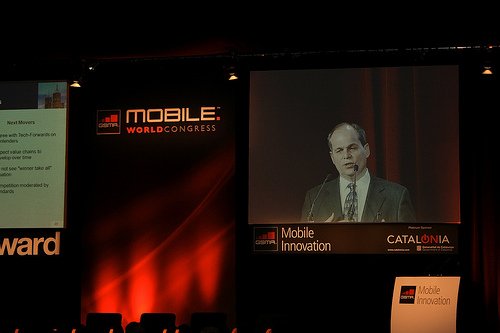 Requestec, an Adobe Flash-to-SIP telephony provider, announced their key involvement in the release of Bell Mobility’s, Bell Video Call application built on the Facebook platform.
Requestec, an Adobe Flash-to-SIP telephony provider, announced their key involvement in the release of Bell Mobility’s, Bell Video Call application built on the Facebook platform.
The application allows Facebook users to visit the profile page of a Bell subscriber that has added the application and click on their Bell Video Call tab. From here, calls can be made from anywhere in the world to the Bell subscriber’s HSPA Video Calling handset; all at no cost to the caller.
The company claims it’s the first video calling application in North America that is fully integrated into Facebook.
The application is available to Bell Mobility subscribers with video calling capable phones on the new HSPA network.
“We were approached by Bell Mobility about the possibility of incorporating video-calling functionality into Facebook. This was our chance to show the world our technology within the Internet’s leading online community, Facebook,” said Requestec’s CEO, Marek Zwiefka-Sibley.
According to Bell, its the new HSPA network (launched last month) covers 1.2 million square kilometers, reaching approximately 20,000 Canadian towns and cities and 93% of the population. It offers mobile speeds of 21 Mbps.
Over the last 4 years Requestec has been focusing on developing Adobe Flash-based telephony solutions built on the Zenon Telecommunications platform. In 2008, the company launched Voixio, one of the world’s first web-based no-download Flash-to-SIP telephony services.

 Intel and Numonyx say their researchers are now able to demonstrate a vertically integrated memory cell – called PCMS (phase change memory and switch). PCMS is comprised of one PCM element layered with a newly used Ovonic Threshold Switch (OTS) in a true cross point array.
Intel and Numonyx say their researchers are now able to demonstrate a vertically integrated memory cell – called PCMS (phase change memory and switch). PCMS is comprised of one PCM element layered with a newly used Ovonic Threshold Switch (OTS) in a true cross point array.  Greg Atwood, senior technology fellow at Numonyx, added that the results show the potential for higher density, scalable arrays and NAND-like usage models for PCM products in the future.
Greg Atwood, senior technology fellow at Numonyx, added that the results show the potential for higher density, scalable arrays and NAND-like usage models for PCM products in the future.  Texas Memory Systems announced that its
Texas Memory Systems announced that its .jpg) The RamSan-6200 is a scaled up system that combines twenty RamSan-620 solid state disks in a single datacenter rack and uses Texas Memory Systems’ TeraWatch software to provide unified management and monitoring from a single GUI console.
The RamSan-6200 is a scaled up system that combines twenty RamSan-620 solid state disks in a single datacenter rack and uses Texas Memory Systems’ TeraWatch software to provide unified management and monitoring from a single GUI console.  Akamai Technologies
Akamai Technologies What makes this new HD network unique is that it delivers video from HTTP servers located closest to end users (over 50,000 in 900 networks in 70 countries) minimizing packet loss and maximizing streaming.
What makes this new HD network unique is that it delivers video from HTTP servers located closest to end users (over 50,000 in 900 networks in 70 countries) minimizing packet loss and maximizing streaming. Supporting this level of traffic requires a global network that can manage millions of simultaneous users streaming very high bitrate content, they claims.
Supporting this level of traffic requires a global network that can manage millions of simultaneous users streaming very high bitrate content, they claims.













